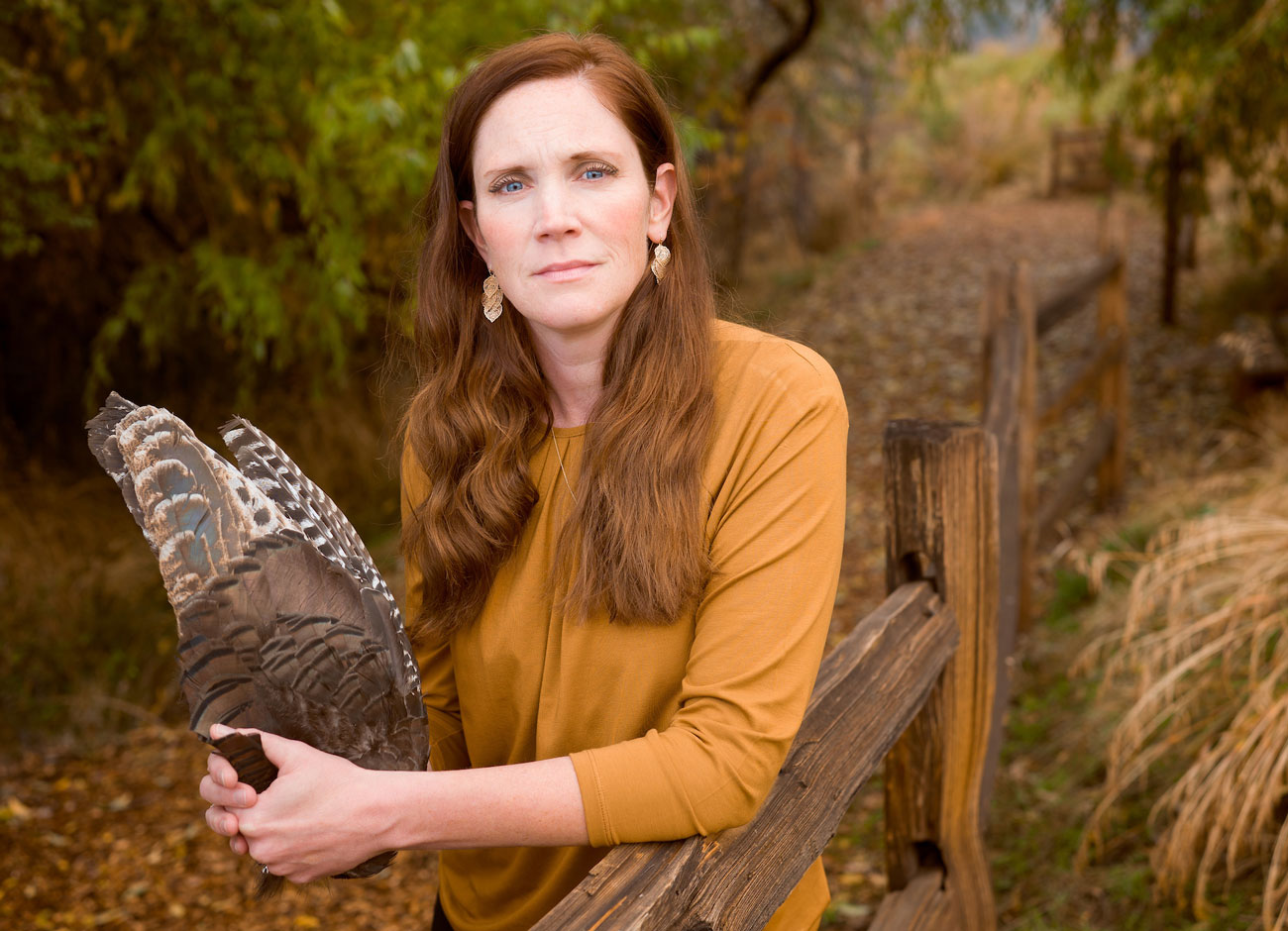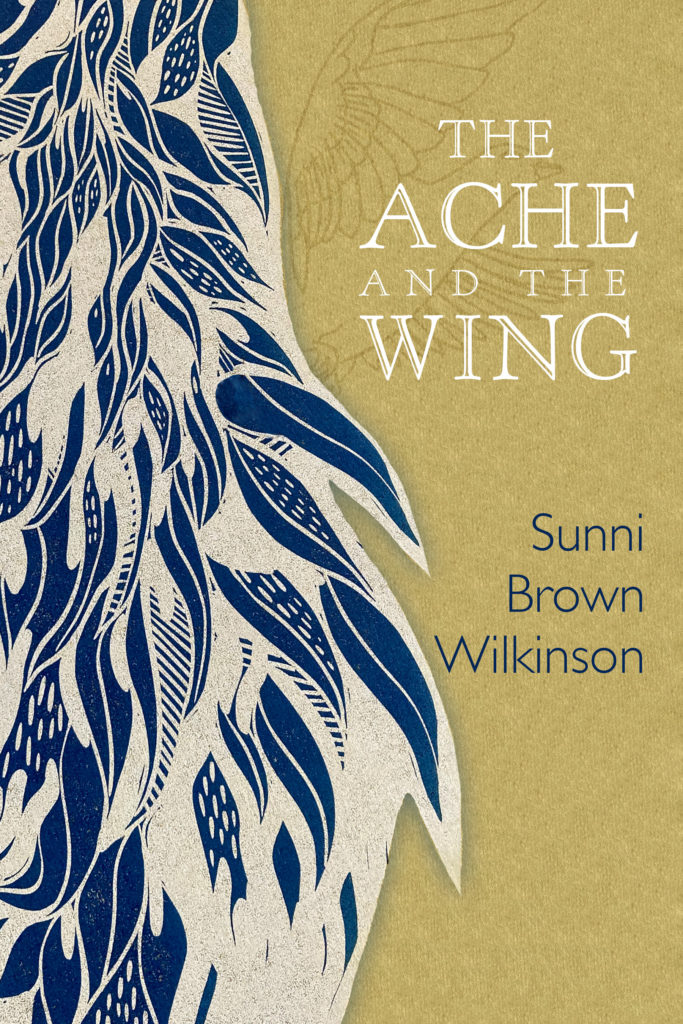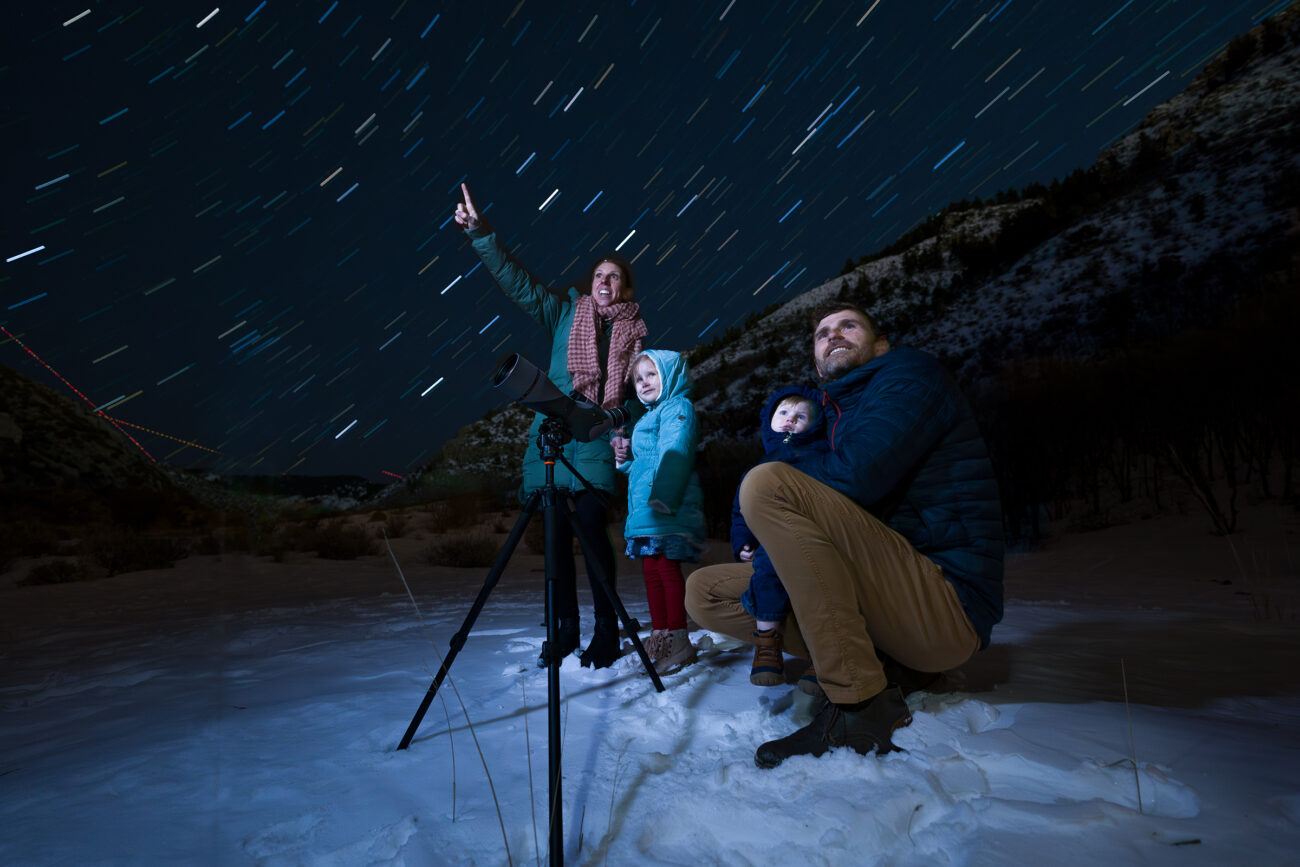Licking Her Wounds

Sunni Brown Wilkinson’s poetry collection The Ache and The Wing was born from loss.
Her son, Jude, was born stillborn just before his due date. What is a person to do after that?
Wilkinson ‘01 found her way with words. Tapping them out on a keyboard. Erasing them. And then pressing on. Her poems read like sirens in the distance — unwavering, unmistakable reminders of an emergency that happens not be yours. In “Don’t Feed the Coyotes,” Wilkinson writes:
Creatures here crouch, desperate
for life the way a man
haunts a mine on all fours,
looking down into a hole that will ruin
or save him. The way we did
that long night in the hospital
after the news. We looked into the hole
of us a long time, fur matted,
heads down. Something between prayer
and a baring of teeth.
The unsparing honesty of the collection puts the reader in the room with the speaker, a place where one is welcome but not waited upon. Wilkinson’s invitation is simple: bear witness to grief. Watch it bloom, wilt, then blow away. Live with what remains.
“I think the world is a magnificent place,” she says over Zoom in August. “I never stop being fascinated by what is around us.”
Her poems reflect that awe and tenderness, too. She writes of everyday magic: “Wings of strange creatures brush our flowers while we sleep.” Tomatoes are “fleshy fires/the garden ignited/under green.” Wilkinson rejoices in wildness: “Love the bees. Like you they have/ names and middle names/memories deaths.”
Animals lick their wounds, an act believed to promote healing. The Ache and The Wing is Wilkinson’s self-preservation inked on the page. But she didn’t intend to write it.
But grief can honor whatever is lost, she says.
Wilkinson teaches creative writing at Weber State University and began writing to process Jude’s death. She fed a few poems to her small writing group and found a receptive audience. Eventually, two themes emerged: grief and birds. She kept going and found a home for the collection with Sundress Publications in May 2021. (By contrast, her first book, The Marriage of the Moon and the Field was written over a decade.)
Wilkinson first fell in love with creative nonfiction while a student at Utah State University studying under Helen Cannon, who taught for 13 years and was known for prescribing the New Yorker to aspiring writers in her class. These days, Wilkinson advises her own students to “write what you see. Write about the physical world. Give readers an image.”
Because writing about your sadness isn’t enough. Readers need something to hold between their teeth and suck the marrow from.
“If you’re just writing about emotions, there is no door into the work,” Wilkinson says.
Throughout the poems in The Ache and the Wing she braids the physical landscape with an emotional one. In “Don’t Feed the Coyotes,” the human body and an abandoned roadside mine are one and the same — both empty with a “deep down a stillness.”
“I think that poetry can be deceptive,” Wilkinson explains. “You can use simple language that cuts really deep.”
That may be one reason the collection sings. Wilkinson wrote it hoping that she could find the words that transcend the loss of her baby and tap into a collective experience of loss.
“Even if you haven’t yet, you know it’s coming,” she says. “The more personal it is the more universal it is.”
Wilkinson’s poems read like an act of mercy that we could all use a little more of. They are a porchlight in the mist — a beacon for the lost to find home again.
“Ghost”
All summer my father plays evangelical AM in the garden on an old
radio to keep out the deer. Neighbors have barbed wire fences, mo-
tion sensors, traps, but he uses a radio. The voices, the singing, the
brave hallelujah of being born again keeps them away.
My friend says for weeks a single noisy cricket has sung outside her
window every night, kept her awake. One morning she crept out, ear-
ly, poured gasoline on it. Finally, sleep. But no song.
Near the end of June the baby arrives but he is dead already. We hold
the husk of him in a white blanket before the mortician comes. No
blood hum or cry song, just silence.
August moon and stories around the fire, and in the background, my
father’s radio. We lean in to hear the end of a ghost story—a haunting,
a spirit returning home—and from the cornstalks a woman sings “Be
Still, My Soul.” Crackle of the fire and the spirits we can’t see.
“All now mysterious shall be bright at last,” we sang near a tiny grave
on a June day.
My son is a mystery, a body we held briefly and let go.
My body is a mystery, a cave, a house, a shell.
The Bible says one day the earth will be fire and we’ll all be born
again—to singing or to silence. Come to me then, my little deer, my
cricket. My darkest hallelujah.
A Conversation with Sunni Brown Wilkinson
What was the first poem you wrote in the collection The Ache and The Wing ?
“Rodeo.” About a year after we lost Jude, I just thought all I want to do is to hold someone’s hand, somebody who understands what I am going through. I was doing a little bit of family history and I thought, I wish I could just hold the hands of all these women who also lost children. I kept taking this image of holding the hand, which comes at the end of the poem, and I just thought that in moments of grief you just have to hold your own hand and eventually you get through it. And I feel like most people can relate to that.
I recently read your poetry to my husband, who doesn’t read poetry. When I read “Ghost” it made him stop in his tracks. I feel that’s a win.
I try to write for just the average person. You don’t have to have a degree in poetry to appreciate it, I hope. My husband never read poetry before we got married, so I kind of think about him. He is my reader that I am reaching out to. He will say this one is really good, or I don’t get this one. If he says I don’t get one, I think I am trying too hard. And I don’t think that that’s a weakness. I think it’s easy to overdo a poem, and you need someone to say pare it back a little, go back to what you really want to say and be honest about it.

When you are writing, do you have a specific image in your mind?
It’s more of a line-by-line-by-line approach. It’s the opposite from having this canvas in front of me where I have an image of what I want to relate and then I just put it all down. It will just come to me like in a little flash here and a little flash there. That may be why my poetry tends to be with more braided images because I am not sure what’s going to happen. If know ahead of time what I am going to say, it almost kills it when you sit down to write. It sort of vanishes. But the foggier it is, and the more you struggle to reach it, then you are surprised by the end of the poem just as much as the reader. I think it was Robert Frost who said, “No surprise for the writer, no surprise for the reader.” Having it revealed slowly is a bonus because it reveals to you what you were looking for and didn’t know until you struggled to get it out.
You are not a nature writer, but nature features prominently in your writing. What do you find a home in when you’re out in nature?
I am a homebody, but my other happy place is just being outside. I just have to be in the mountains, and in trees, and if I can do that everything will be okay. I think it’s just my place where I can feel peace. The Perseids meteor shower is coming up and I am going to be one of those weird parents who wakes their kids up in the middle of the night. The very simple beautiful moments really give you a sense that life is miraculous and that we are so lucky to be alive.
I love that you are waking your kids up to watch the meteor shower. Please don’t stop doing that.
I feel like I am more alive when I am outside or when I am writing than almost any other time. There is this energy in the air as soon as you walk outside, and it’s like all of life is humming and it’s bigger than you. We get so caught up in the smallness of ourselves. It’s claustrophobic, and it can just feel awful. But being outside, you are a small part of a very big creation. It sounds like that would make you feel less, but it makes you feel more, and you connect with bigger things. One of my professors in graduate school said “nature seems to be indifferent to you. And it’s the indifference that is actually a blessing to you.” Whatever is going on in your life, the world around you will move on and instead of that being a crippling thought, it’s liberating because whatever you are struggling with, it’s not the end of the world.
This is a strange time of so much loss. It seems fitting to write and read more poetry. How does one start if this is a foreign endeavor?
You need tools to access some of the deeper parts and to be able to say things the way that you want to say them. It’s easy to skim the surface, but it takes help to dig a little deeper. I would say the best teacher is poetry itself. Look around for poetry that speaks to you in some way and read as much as you can. And as you read it, it will pull out a voice in you that you have always had but maybe you needed to hear this other voice to help you get there. People are welcome to be closet poets — everyone is welcome to do that. I think that can be very therapeutic. But if you want to take it a step further, there are community classes, libraries, universities, city poet laureate programs, memoir classes that help you step into the deep waters of the self. Sometimes you just need a person to ask the write question to help you go a little deeper into yourself and see what’s there.
By Kristen Munson
Portrait by Levi Sim.






